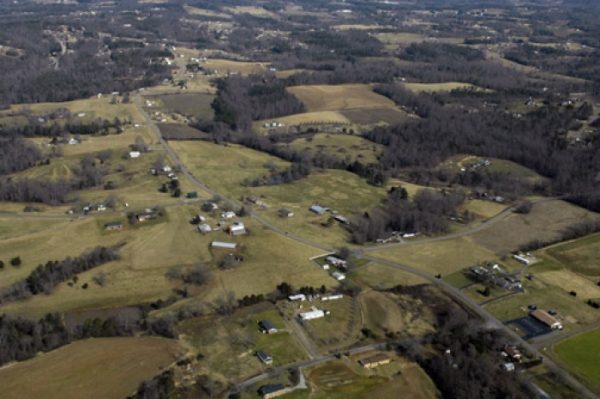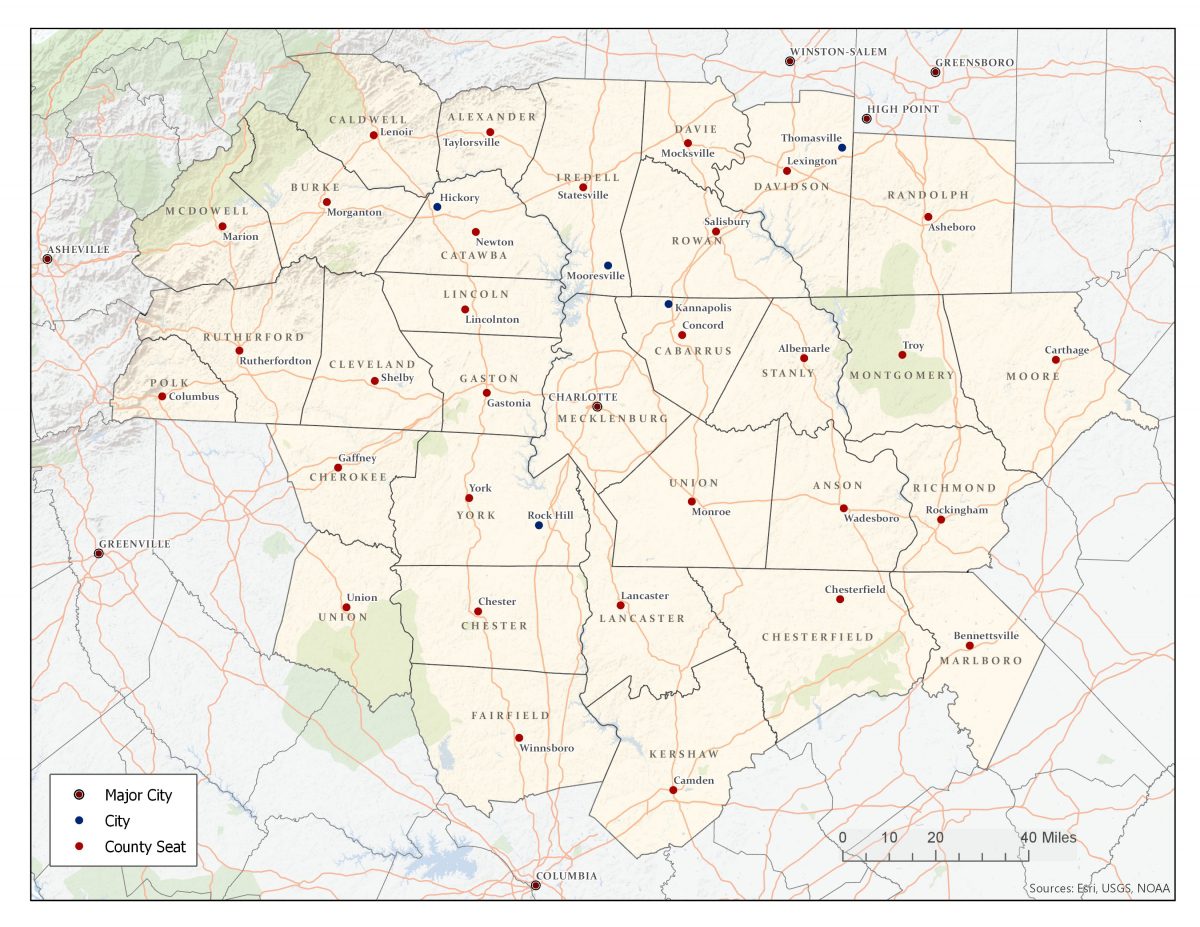Defining our study area: How we picked the 32 counties

The city of Charlotte has a long reach. While this is certainly not a surprise, we don’t really know much about how Charlotte influences its surroundings and how far this reach extends.
We do have some conventions to help us understand the extent to which our region is connected. Metropolitan areas are commonly used to identify economic reach. For example, metropolitan Charlotte is defined as seven counties, all of which send at least 25 percent of their workforce to Mecklenburg County jobs daily. The Urban Institute itself has traditionally focused on the 14-county region surrounding Charlotte.
Unfortunately, these commonly used definitions are insufficient to describe experiences many share on a daily basis. We all have coworkers who commute more than 50 miles daily, we all get our drinking water from a river that starts 100 miles away, we all consume food grown on the other side of the state, country or world – but we rarely consider the full extent of these interdependencies.
| The Carolinas Urban-Rural Connection A special project from the UNC Charlotte Urban Institute |
|---|
| Read about the project here |
| Introduction: Strengthening ties to revitalize communities |
| Historical Overview Part 1: The early development of a connected region in the Carolinas Piedmont |
The Carolinas Urban-Rural Connection project is focused on understanding the extent of Charlotte’s reach in the broadest possible sense. Our goal was to study the area which Charlotte regularly depends on for food, water, workers and recreation, as well as the area which frequently depends on Charlotte for jobs, transportation, goods and entertainment.
To do this, our attention was focused on the areas between Charlotte and the other metropolitan centers in the Carolinas: Columbia, Greenville, Asheville, Winston-Salem and Fayetteville (we treat Hickory as an exception due to its proximity to, and economic reliance on, Charlotte).
This area makes up 32 counties, all within 75 miles of Charlotte. These counties share a common history, landscape and culture. And the region is tied together with a network of infrastructure that provides our food, water and mobility.
It is not our intention to suggest that these counties are entirely dependent upon Charlotte, or vice versa. Indeed, one of the guiding principles of this project has been to explore where and how the region’s historic interdependence has frayed or failed. However, history shows us that the greatest prosperity in our region has been a result of interdependence and cooperation among the counties that make up this study area.
 .
.